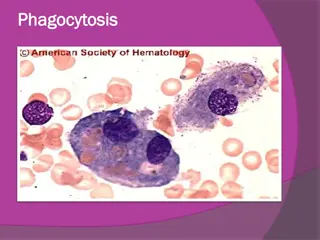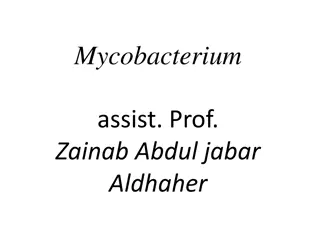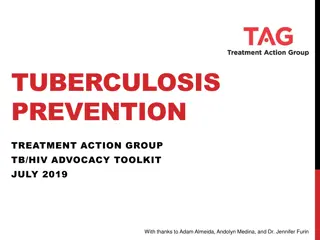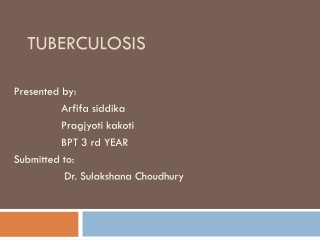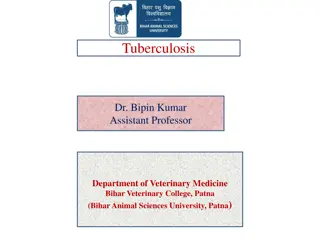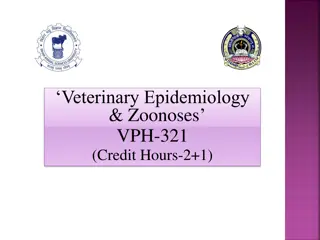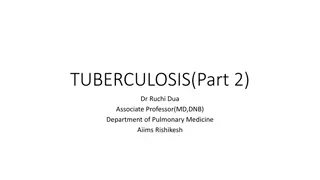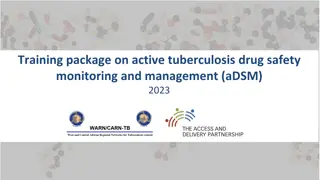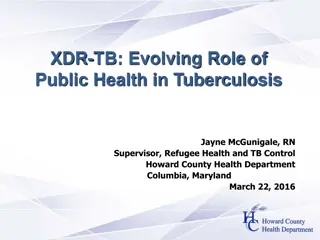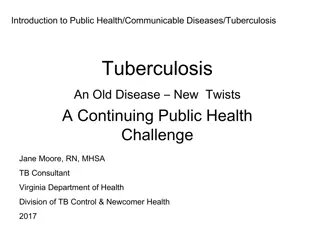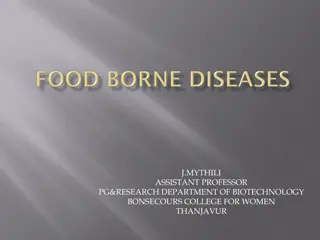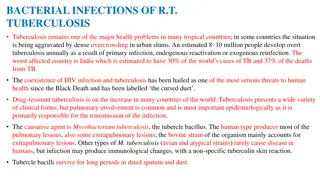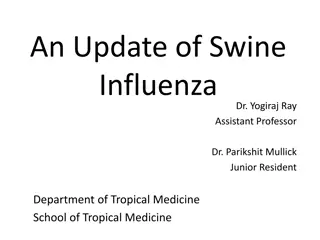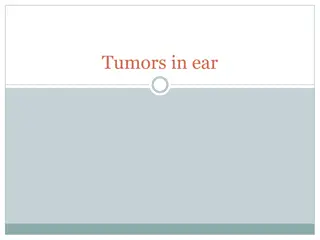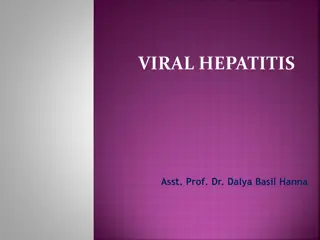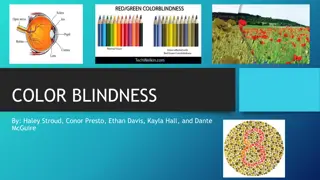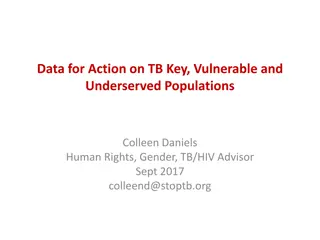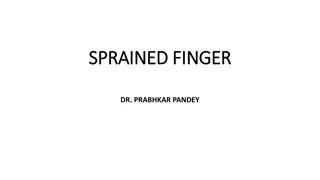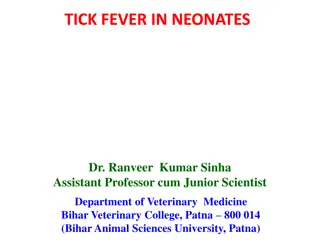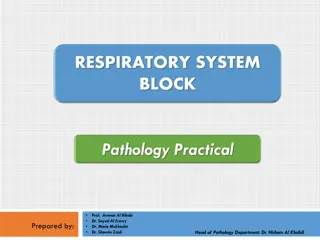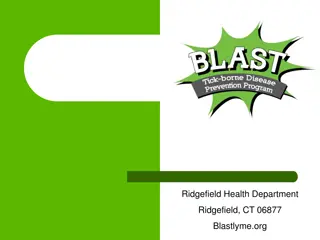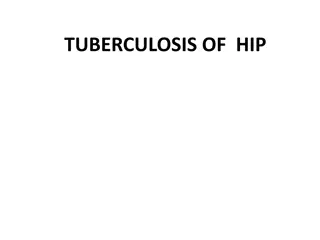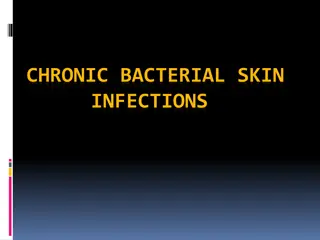Understanding Tuberculosis: Causes, Symptoms, and Prevention Measures
Tuberculosis (TB) is caused by Mycobacterium tuberculosis bacteria and primarily affects the lungs but can impact other body parts. TB can be latent or active, with symptoms like fever, weight loss, and coughing. Prevention involves protective strategies during autopsies and universal precautions. Early detection and treatment are crucial in managing TB effectively.
Download Presentation

Please find below an Image/Link to download the presentation.
The content on the website is provided AS IS for your information and personal use only. It may not be sold, licensed, or shared on other websites without obtaining consent from the author. Download presentation by click this link. If you encounter any issues during the download, it is possible that the publisher has removed the file from their server.
E N D
Presentation Transcript
OME Tuberculosis Training V2023.10.06
About Tuberculosis Tuberculosis (TB) is a disease caused by bacteria called Mycobacterium tuberculosis. The bacteria usually attack the lungs, but TB bacteria can attackany part of the body, such as the kidney, spine, and brain. If not treated properly, TB disease can be fatal. TB disease was once the leading cause of death in the United States.
TB Infection Latent TB Infection: Not everyone infected with TB bacteria becomes sick. Some have latent (inactive) TB infection and do not feel sick, do not have any symptoms, and cannot spread TB to others. Some people with latent TB infection can become "reactivated." However, they can take medicine to control and limit further disease complications. Active TB Disease: People with active TB disease can be treated and cured if they seek medical help but are considered at risk for infecting others.
Typically, TB germs are put into the air when a person with active TB disease of the lungs or throat coughs, sneezes, speaks, or sings. These germs can stay in the air for several hours, depending on the environment. Persons who breathe in the air containing these TB germs can acquire the disease and go on to develop the latent or active form of the disease How Tuberculosis Spreads During autopsy, TB bacteria could be spread through aerosol-generating procedures Since TB is spread through the air, people cannot get infected with TB bacteria through handshakes, sitting on toilet seats, or sharing dishes and utensils with someone who has TB.
Symptoms The general symptoms of TB disease include: Feelings of Sickness or Weakness Fever Night Sweats Weight Loss The symptoms of TB disease of the lungs also include: Chest Pain Coughing Up Blood Coughing Symptoms of TB disease in other parts of the body depend on the area affected.
Tuberculosis Prevention Protective strategies during autopsy include assessment of the risk of a case being infected, early recognition of gross lesions, use of methods for reducing the production of infected aerosols, and protection against any aerosols created by using appropriate personal protective equipment. A combination of engineered and administrative controls and PPE protocols are utilized to protect employees from TB and other infectious diseases. Staff is responsible for following department protocols and properly wearing PPE. Universal precautions should be used when dealing with human remains.
Suspected TB Case Procedures for Scenes Protective strategies at scenes include treating every case as if there is a riskinfection (Universal Precautions) by using appropriate personal protective equipment. PPE requirements include:approved N95 Respirator,Bunny Suit/Tyvek suit with hood if required by scene type,booties,and eye protection (goggles/face shield) If a decedent is suspected to have TB,a cloth can be placed over the nose and mouth of the decedent to protect against air expelled from the lungs during movement
Cases with known or suspected active TB that require aerosolizing procedures (full or partial autopsies) should be examined in the special procedure exam suite due to increased ventilation and down-draft autopsy tables. Persons entering or leaving the special procedure exam suite should be kept to a minimum. Full PPE, including the wearing of an N95 rated face mask or respirator, should be worn at all times during such an examination. Care should be taken during the examination to limit activities that generate aerosols,such as excessive sampling, handling, or cutting of known or suspected TB lesions in lung or other tissues beyond what is necessary for diagnosis. Cut sections of TB lesions to be retained should be placed in formalin without delay. Cleaning of the workstation should be undertaken as soon as feasible after completion of exam. Suspected TB Case Procedures for Autopsy
CDC Recommendations C D C h a s c h a n g e d r e c o m m e n d a t i o n s f o r t e s t i n g t o : Pre-Placement/Baseline Screening prior to beginning work Post-exposure testing for those exposed to a known TB case without proper PPE Testing is no longer recommended on a routine (i.e.annual) basis.



